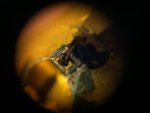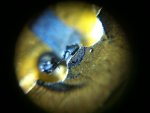Well. That sucks. I do have access to a professional precision mill. But I didn't realize it was the size of the crystal that determined wavelength, I thought it was the material in the layers that excite and emit wavelengths. As far as welding gold to gold...it would be easy ish because its such low amperage to get an arc to put such small pieces together.
I have some rough ruby. I couldn't seed off that?
I have some rough ruby. I couldn't seed off that?







